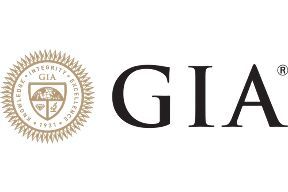What is Diamond Certification?
Diamond certification is a process in which trusted experts use a standardized grading system to quantify key qualities of a diamond. This helps diamond shoppers understand how a specific diamond will look, making it easier to purchase the right gemstone without worry.
Independent certification is how you can be sure that you're getting a quality diamond that’s accurately graded without bias. All Blue Nile loose diamonds are analyzed and graded for quality by leading labs such as the Gemological Institute of America (GIA) or the International Gemological Institute (IGI). Additionally, all Astor by Blue Nile™ diamonds are certified for light performance by GemEx, the leader in light measurement.
Understanding Diamond Grading Reports
Diamond grading, also known as diamond certification, helps demystify a diamond’s most important qualities to help buyers make informed decisions. The two main reports issued by the GIA are the Diamond Grading Report and the Diamond Dossier®. And, while similar, there are important distinctions.
• Diamond Grading Report: Many consider this to be the blueprint of a diamond. Starting with the 4Cs of diamonds – cut, clarity, color, and carat – the report includes precise measurements and shape, as well as a plot or map of the individual diamond inclusions, also known as characteristics. The diamond grading report will also note if the diamond has a girdle inscription, and will describe important characteristics beyond the clarity grade.
• Diamond Dossier®: This dossier offers the same grading information as the Diamond Grading Report, minus the plotted diagram. To prove authenticity, the dossier also includes the laser inscription number on the diamond’s girdle.
Review A Sample GIA Report
Ready to explore the grading behind GIA certified diamonds? You can view our sample GIA Diamond Grading Report to familiarize yourself with the look and orientation of GIA diamond reports. You’ll find a GIA grading report on the product page of every loose diamond on our website, but you can also download a sample below. Note the GIA diamond chart including the 4Cs, a plotted diagram and mapping of the stone’s proportions.

PRINT SAMPLE REPORT
Is It Important To Get A Diamond Grading Report When You Buy A Diamond?
Your diamond certification is so important, it’s sometimes referred to as the 5th C. Diamonds with a professional grading report will help you down the road to:
• Confirm the quality of your diamond
• Help to verify ownership for repair or insurance
• Prove useful if you want to resell a diamond
All Loose Blue Nile Diamonds Include A Diamond Grading Report
Every loose diamond we sell at Blue Nile has an expert diamond grading report. These reports can help you understand the most important elements of a given diamond for engagement rings, wedding rings, fine jewelry, and other applications.
Keep in Mind: Diamond certifications help buyers understand the quality of the diamond they’re purchasing. These certifications ensure that you’re getting a quality stone with transparency for the purchase process. For worry-free diamond selection, choose our graded diamonds.
How To Use A GIA Diamond Certificate
To verify a diamond's quality before purchase, be sure to review its GIA Diamond Grading Report or Diamond Dossier and the GemEx certificate if you are buying an Astor by Blue Nile™ diamond. It’s also good to know that your purchase of a custom-built ring, pendant or pair of earrings from Blue Nile comes with an appraisal that includes the retail replacement value of the item for insurance purposes.
Do All Labs Grade Diamonds The Same Way?
Definitely not. The diamond grading protocols, systems and nomenclature can vary by organization. Some of the most trusted diamond grading labs include GIA and IGI. Other labs, such as the American Gem Society (AGS), European Gemological Laboratory (EGL) and Hoge Raad voor Diamant (HRD) have their own standards for assessing diamonds.
Learn More About Diamond Documentation
If you are interested in a diamond and a certificate is not available for viewing on the site, simply contact a diamond and jewelry
Diamond Certification FAQs
What does it mean if a diamond is GIA certified?
A GIA certified diamond is one that has been graded by the Gemological Institute of America. These GIA-graded diamonds have a unique GIA Diamond grading Report that identifies the gemstone’s specific qualities. GIA Diamond Grading Reports assess a diamond's 4Cs along with any characteristics. A GIA certified diamond is one that has been graded by the Gemological Institute of America. These GIA-graded diamonds have a unique GIA Diamond grading Report that identifies the gemstone’s specific qualities. GIA Diamond Grading Reports assess a diamond's 4Cs along with any characteristics.
How do I check a diamond's report?
At Blue Nile, we have each loose diamond’s grading report readily available for transparency in the buying process. If you’d like to complete a report check for any of our graded diamonds, you can review its listing on our website or you can search the diamond’s unique report identification number the grading lab’s website as well.
Are all diamonds IGI or GIA certified?
Though many diamonds are IGI or GIA-graded, not all have these certifications. At Blue Nile, we offer reports for our loose diamonds and larger stones. Smaller diamonds, such as pavé or stones in halo rings, typically do not have reporting available.
Some jewelers do not opt to have their diamonds graded so their gems will not have these reports. We always suggest opting for certified diamonds when purchasing larger or loose diamonds.
Are lab grown diamonds graded?
Yes, many institutions like the GIA and IGI offer grading for lab grown diamonds. These reports will include additional information about the lab-made diamond’s growth process, such as CVD or HPHT diamonds.